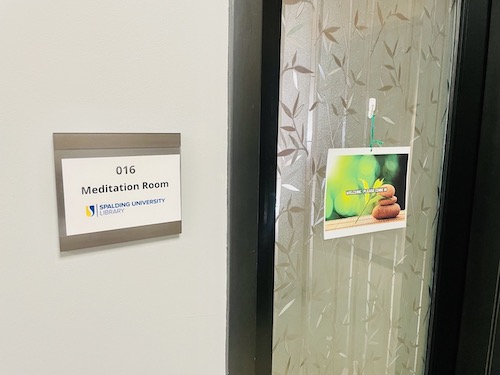
By Allison From-Tapp, Psy.D., HSP
Finding a moment of tranquility in our busy lives can feel like an impossible dream. In the rare moments when we have some downtime, we almost automatically fill it with answering emails, playing on our phones, or just taking a nap. None of these are a problem in moderation, but if we never engage our mind in a more purposeful, joyful way, we may find ourselves tired most of the time and feeling constantly torn between competing demands. In a life that may feel chaotic, the ancient art of Mindfulness Meditation provides hope that we can reconnect to our true nature and cultivate joy and connection.
What is Mindfulness?
Put simply, mindfulness is the practice of paying attention, on purpose, in the present moment, and doing so without judgments. It is a mental state that involves paying attention to your experience, which may include your thoughts, feelings, bodily sensations as well as the world around you. The basics of mindfulness are quite simple, but can be very difficult to manifest in a culture that values multitasking and encourages constant distraction. When we attempt to practice mindfulness in a structured, systematic way, we refer to that structure as mindfulness meditation.
A Brief History of Mindfulness
Mindfulness can be traced back thousands of years to several different Asian cultures. One of the oldest names associated with mindfulness as a structured practice is Siddhartha Gautama of Northern India. Born approximately 2600 years ago, Siddhartha was a wealthy prince who became disillusioned with the world and began mind training as a way to find peace and liberation from suffering. Eventually, the practice he developed (Known as The Middle Way) became the basis for much of modern mindfulness practice. Since then, many famous philosophers such as Bodhidharma, Yeshe Tsogyal, Lao Tzu and Padmasambhava have also developed philosophies around different forms of mindfulness meditation. This is why there are so many versions of mindfulness meditation to choose from.
Western practitioners of mindfulness meditation, beginning in the 1970’s, developed several secular forms of mindfulness, most notably Mindfulness-Based Stress Reduction (MBSR), adapted by Jon Kabat-Zinn, which incorporates several aspects of mindfulness meditation into one combined practice.
Why Practice Mindfulness?
Research on MBSR and other forms of mindfulness meditation has consistently shown significant benefits in the areas of stress reduction, improved mental health, increased self-awareness, better relationships, boosted productivity and enhanced focus. It seems that mindfulness helps by promoting calmness and resilience, sharpening concentration, and reducing reactivity to life experiences. It also deepens your understanding of your thoughts, emotions, and behaviors which leads to being more in tune to others’ needs. Most importantly, mindfulness meditation does not require special equipment or significant time commitments.
How might this blog help?

Each month we will publish a new post to help start your mindfulness journey. While you wait for next month, feel free to check out our Meditation Center on campus. It is in the lower level of the library. There you will find a relaxing room with many resources including CDs to pop in for guided meditations. There are meditation cushions to practice seated meditations and it is also just a nice place to go for a quiet moment in between things. Be on the lookout here each month for more mindfulness news, practice ideas, and spots on campus for mindful moments.